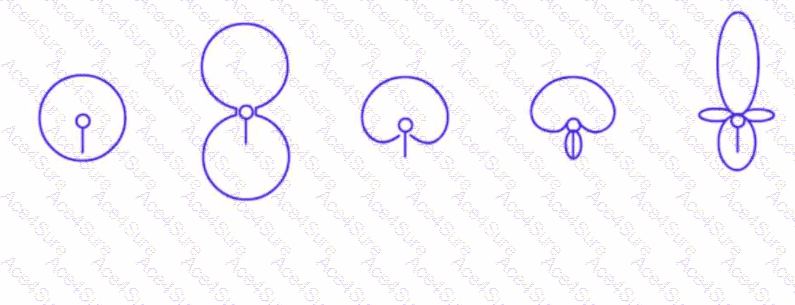The second pattern from the left (the figure-eight pattern).
The figure-eight (or bidirectional) microphone pattern is the most susceptible to feedback among the choices shown. This pattern picks up sound equally from both the front and rear of the microphone while rejecting sound from the sides. Due to its large rear lobe, it is prone to capturing sounds from reflective surfaces or rear-facing speakers, which can lead to feedback in a live sound environment.
Here's a breakdown of the patterns:
First pattern (Omnidirectional): Captures sound from all directions. While it can be prone to feedback, it doesn’t have a rear lobe like the figure-eight pattern.
Second pattern (Figure-eight/Bidirectional): Susceptible to feedback because it picks up equally from both front and back, which can include unwanted sound reflections.
Third and Fourth patterns (Cardioid and Supercardioid): These are more directional with better rear rejection, thus less susceptible to feedback.
Fifth pattern (Shotgun): Highly directional with minimal pickup from the rear and sides, making it the least susceptible to feedback.
CTS Technology Specialist Reference
CTS materials on microphone types and placement emphasize that bidirectional (figure-eight) microphones should be positioned carefully in live sound setups to avoid unwanted rear lobe pickup, which can lead to feedback when speakers are positioned behind or to the sides of the microphone.

